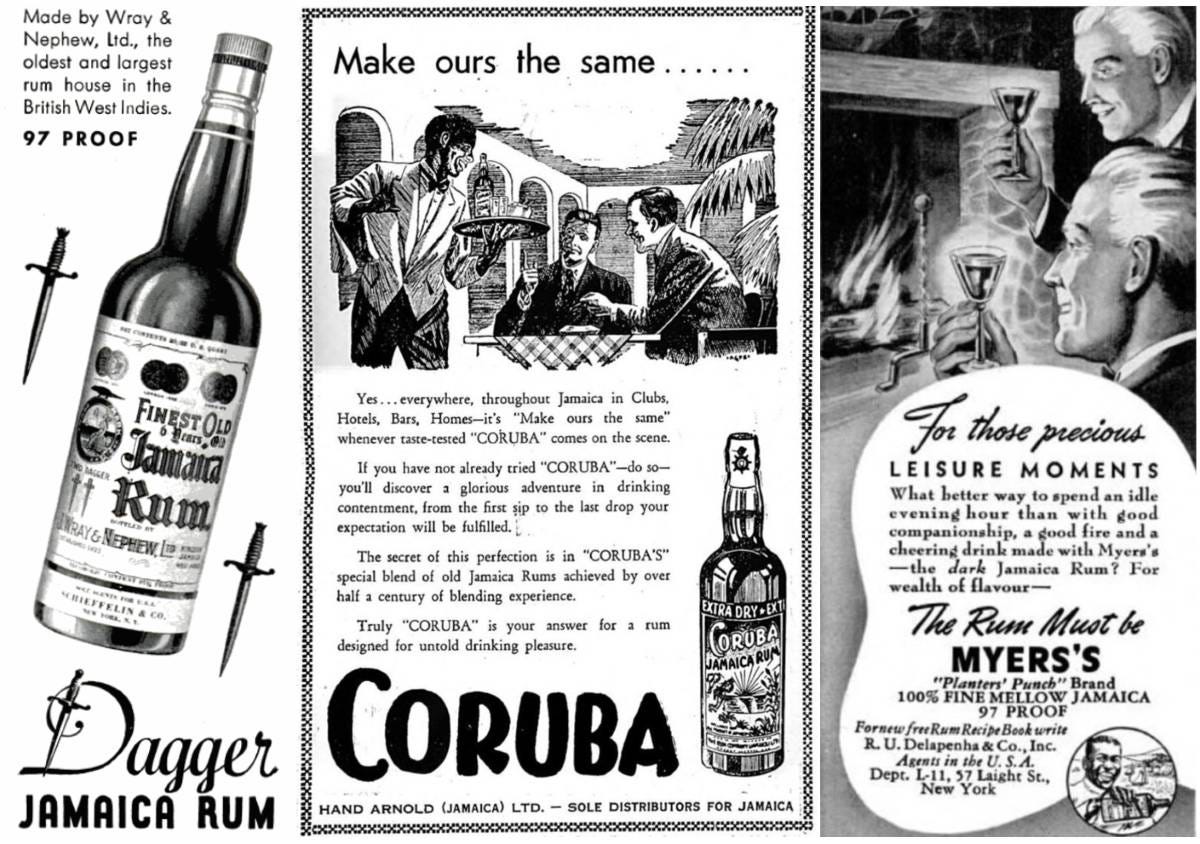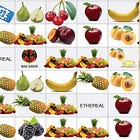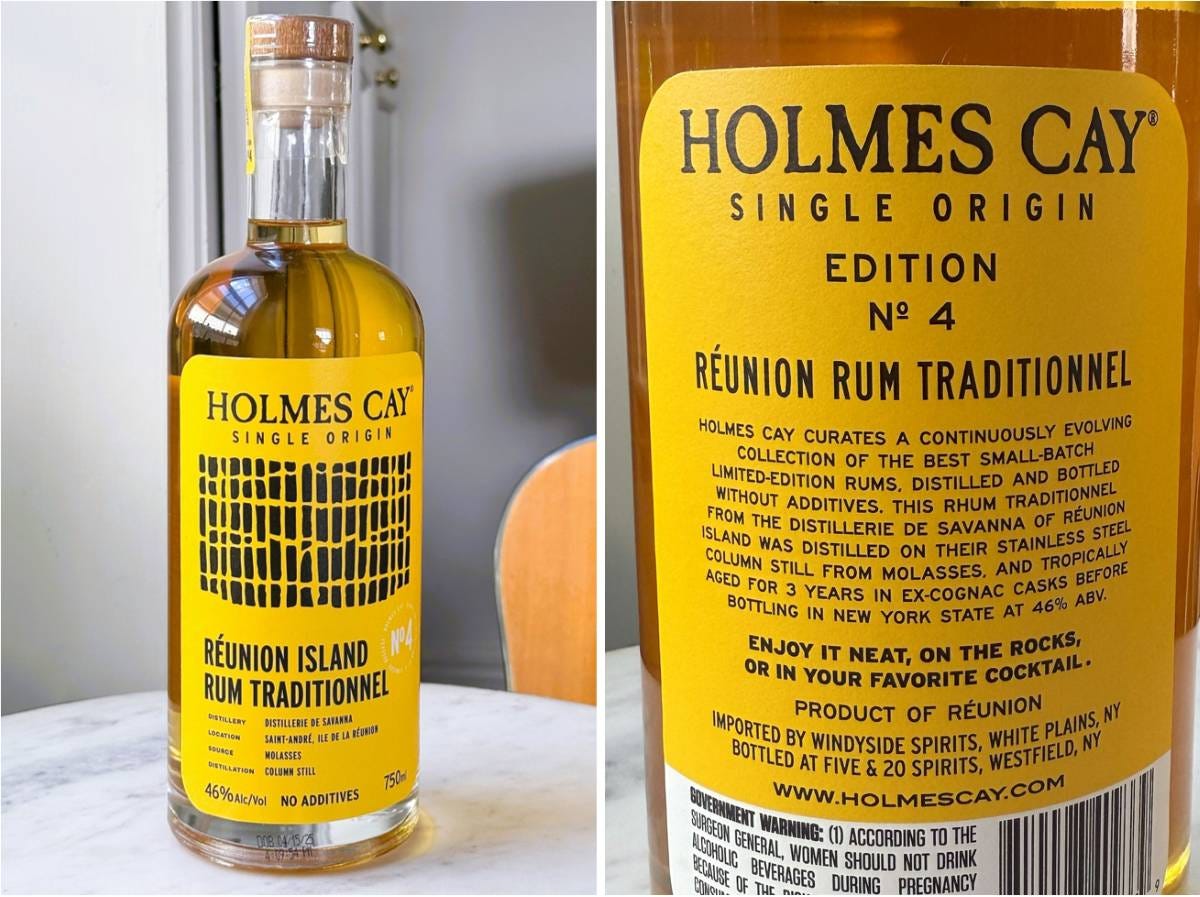The Essential Tiki Rum Style That Disappeared
Today, I’m combining two of my favorite topics: rum (naturally) and tropical drinks made with rum. But even if you’re not into umbrella drinks, I’ll be covering a style of rum that, until recently, received very little attention outside of one country. I’ll conclude by introducing a newly released rum that should be of high interest to tiki drink afficionados, especially in the US.
To set the stage for what follows, consider these two maxims:
Today is not the past. Things change.
When following a recipe, what matters is its intent—not blind adherence to instructions.
Following a recipe’s intent means how it was originally made and what ingredients the creator used. This can be trickier than it sounds! For instance, a Trader Vic recipe from the 1940s might say “Jamaica rum,” leading a novice bartender to reach for Worthy Park Overproof because it says “Jamaica rum” on the label.
However, experienced bartenders know that the Jamaica rums available to Trader Vic were rums like Dagger, Myers’s, and Coruba — dark rums of the usual strength and often with enough caramel coloring to influence their flavor. Today’s unaged Jamaican overproof rums, such as those from Worthy Park and Wray & Nephew, weren’t commercially available to Vic, so couldn’t have been used in his recipes.
Styles of the Golden Era
It’s commonly assumed that making tiki drinks requires dozens of rums. In truth, the right five or so carefully selected rums can authentically recreate almost all of the “Golden Era” recipes from Don the Beachcomber, Trader Vic, and their compatriots.
I recently analyzed the rums used in 88 vintage tiki recipes from Don and Vic. After stylistically grouping together the various rums called for, the mix is:
Gold/Dark Jamaica rum: 47%
Light/Medium aged rum: 64% (mostly Puerto Rico and Cuban white/gold rums)
Demerara rum: 24%
Martinique rum: 10%
Note: Many recipes use multiple rum styles, so the percentages don’t add up to 100%.
It’s the last style in the list, Martinique rum, that’s of interest here and are found in several Golden-era tiki recipes, including:
Mai Tai (Trader Vic’s 2nd adjusted formula)
Donga Punch
Three Dots and a Dash
Don’s Beach Planter
Martinique Swizzle
Puka-Puka Punch
Since the tiki revival movement began in the late 1990s, countless bartenders have seen “Martinique rum” in an old recipe and reached for rhum agricole.
If only it were so simple…
Martinique Rum: Then & Now
If we hop in our time machines, set the dial to 1950, and then head to a liquor store, we will find it challenging to find an agricole rum—unless we are in Martinique. While Martinique distillers were making large amounts of agricole rum at the time, relatively little was exported. What they were exporting, and thus available to bartenders, was molasses or cane syrup rum. Indeed, Martinique and rhum agricole wouldn’t become synonymous for several more decades.
This above is corroborated by 1940s rum lists of the Trader Vic and Don the Beachcomber restaurants. With one exception, the Martinique rums listed were molasses-based rums blended in Europe. The exception, Saint-James, was made with cane syrup. The brand’s bottles from that era explicitly describe boiling the cane juice into syrup. I’ve tasted this rum, and while it’s delicious, it doesn’t have the cane juice “vibe” of today’s rum agricole.
Simply put, the meaning of “Martinique rum” completely changed between the 1950s and today. Martinique rhum agricole wasn’t readily available to consumers in the 1950s, while today, it’s nearly impossible to find a Martinique rum that isn’t rhum agricole.
While some Martinique molasses rum is made today at the Le Galion distillery, it’s not readily available to consumers. Equally important, what Le Galion primarily makes is grand arôme (“large aroma”) rum. It’s pungently flavored and akin to high-ester Jamaica rums intended for blending in small quantities with other “normal” rums.
So, Now What?
With today’s Martinique rums effectively out of the picture for authentically recreating classic tiki recipes, we turn to the 2nd maxim: intent matters more than mindlessly following a recipe’s wording. When Vic or Don specified Martinique rum in recipes, it was for the flavor, not because they came from Martinique.
Trader Vic himself backs this up. In his 1946 Trader Vic’s Book of Food & Drink, he writes:
Martinique Rums: Commonly known as French rums, they are usually heavy in body, coffee-colored, very similar to Jamaica rums, but in many cases have the dry burned flavor of the Demerara.
Furthering this point, several recipes in the book call for either Martinique rum or a dark Jamaican rum like Myers’s or Red Heart.
Following a recipe’s intent means using rums with similar flavor profiles to the molasses Martinique rums of the 1950s. For this, we turn to the other French departments that also make rum: Guadeloupe, Réunion, and French Guyana. While Caribbean rum styles vary significantly from country to country, the French share their rum knowledge and know-how across their rum-making regions.
Guadeloupe and Réunion Island both make large amounts of molasses-based rhum traditionnel. Rhum traditionnel has geographical indication (GI) requirements similar in style to the Martinique AOC. This includes matching minimum levels of volatile compounds, i.e., “flavor.”
Unfortunately, finding a molasses-based rhum traditionnel in the US and elsewhere is challenging for rum and tiki bartenders. I will leave a discussion of Negrita for another time.
Fortunately, a few independent bottlers have begun to pay attention to this underappreciated style. A recent notable example was a 16-year Isautier from Réunion. But with a price north of USD $100, some people are naturally shy about using it in their Donga Punch.
This brings us to Holmes Cay, the US independent bottler, which recently released a much more affordable rhum traditionnel. For American consumers, it may be the best currently available choice to substitute for a Martinique rum in vintage tiki recipes.
Holmes Cay 3-Year Réunion Island Rhum Traditionnel
Let’s start with the vitals. This is a molasses column distilled rum made in Réunion Island at Distillerie de Savanna. It’s aged for three years in ex-cognac casks and bottled in New York state at 46% ABV.
Holmes Cay has two other Savanna rums in its Single Origin portfolio: an agricole and a grand arôme, the latter of which I covered in Réunion Rendezvous.
Naturally, I was curious about this rum’s scientific data, and brand owner Eric Kaye shared these details:
Esters: 36 gr/hlAA
Volatile compounds: 350 gr/hlAA.
While the ester level may not seem high, the volatile compound measurement is far more indicative of its flavor intensity. At 350 gr/hlAA, it exceeds the stated levels of Planteray’s Xaymaca Jamaica rum, no slouch itself when it comes to flavor.
I think of the Holmes Cay Traditionnel’s flavor as a first or second cousin of Jamaica hogo. There’s a bold, fermentation-forward “rummy-ness” similar to certain other Guadeloupe and Réunion molasses rums I’ve tasted. Without getting into tasting note territory, the flavor begins with some umami/mushroom notes before transitioning to fruit flavors, such as jackfruit, but without the overripe banana and petrol notes characteristic of Jamaican flavors. It’s both familiar and unfamiliar at the same time.
That said, I can’t promise you that the Holmes Cay Rhum Traditionnel tastes exactly like the Saint-James, Rhum Charleston, and Negrita that Vic and Don used in the 1950s. But I’m confident that it comes much closer than any rhum agricole will.
Holmes Cay provided me with the sample bottle shown above.
Tropical drink image shown at the top courtesy of Brian Maxwell.










One of the many reasons I never want to write a cocktail book again, butting heads with editors, and subsequently readers, over using updated ingredients to sub for the old ones in the recipes to speak to today's marketplace. Thank you for illuminating these conditions so thoughtfully!
Loved it! Can't wait to get my hands on a bottle of the Holmes Cay.
Any opinion on the Denizen Merchant's Reserve? I thought it had some rum traditionnel in its contents just to emulate that Mai Tai mix.